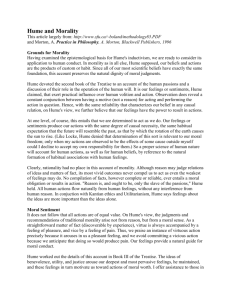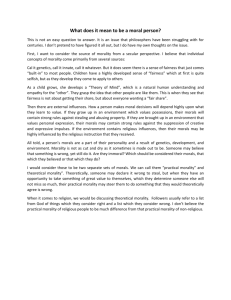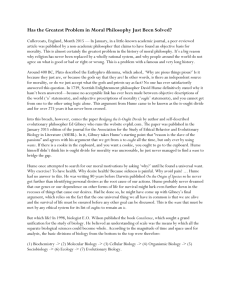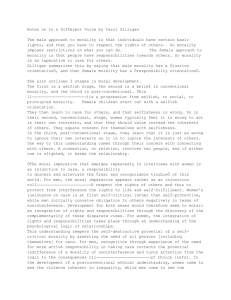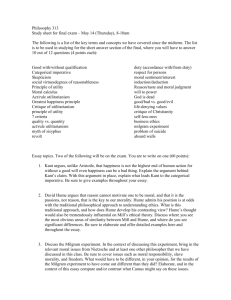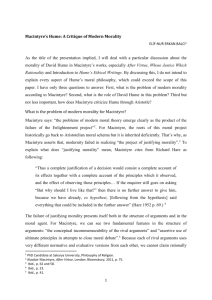Click here to the core Hume resources
advertisement
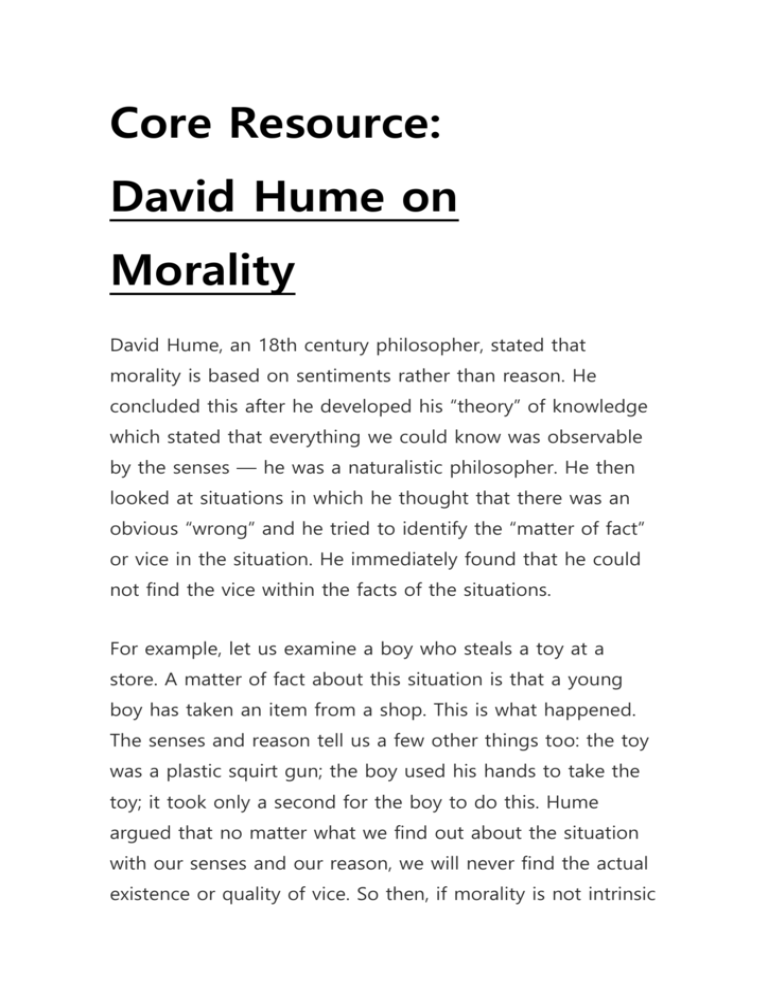
Core Resource: David Hume on Morality David Hume, an 18th century philosopher, stated that morality is based on sentiments rather than reason. He concluded this after he developed his “theory” of knowledge which stated that everything we could know was observable by the senses — he was a naturalistic philosopher. He then looked at situations in which he thought that there was an obvious “wrong” and he tried to identify the “matter of fact” or vice in the situation. He immediately found that he could not find the vice within the facts of the situations. For example, let us examine a boy who steals a toy at a store. A matter of fact about this situation is that a young boy has taken an item from a shop. This is what happened. The senses and reason tell us a few other things too: the toy was a plastic squirt gun; the boy used his hands to take the toy; it took only a second for the boy to do this. Hume argued that no matter what we find out about the situation with our senses and our reason, we will never find the actual existence or quality of vice. So then, if morality is not intrinsic to objects in a situation, what is morality? Hume said that morality can be found within. When you observe an immoral act, you do not find any right or wrong about the situation when you consider only the objects involved in the act. “Only when you turn your reflection inside yourself, and find a sentiment of disapprobation” will you find a right or wrong about the situation. Hume said that this was only a feeling or sentiment though. Therefore morality is not something of our reason, for we could not find the existence of good or bad while examining the situation with our reason. Our reason only told us facts about what happened and how it happened. Morality then must be a sentiment or feeling. Hume uses the example of the philosophical view of colours, heat and other such “qualities”. Hume says that modern philosophy considers such things as colours, heat and sound as simply perceptions and not definite qualities of any object. Colours and heat are objects of our observation, to be sure, but it can not be said for sure that such things are properties of an object. Take an apple for example. We see red, but red is our perception and is not necessarily an actual quality of the apple. To go even further we cannot even say for fact that an apple exists, and if the apple does not exist than surely red can not be a quality of it. All we really know is that we perceive an apple and in our perceptions it is red. This does not also imply the existence or qualities of the apple. Hume compares this type of thought to morality. Hume is trying to show that like observations of color and heat, morality is not something that can be found, for us, in an object, but instead morality is something which only exists within our world and comes from the sentiments in us. Hume seems to be correct in declaring morality cannot be judged through the senses. We can only know what is afforded to us by our senses and our senses do not tell us when something is wrong or right. Something only becomes wrong or right when someone applies their feelings about certain actions to what they have seen or heard. The evidence for this is the disparity in people’s moral beliefs: what offends one person’s moral sentiments does not always offend another. While many people believe it is morally offensive to commit suicide in any situation, in many cultures though it is more honorable to kill oneself than to admit defeat in a battle. These people did not see suicide in that situation as immoral. Morality is not something that is intrinsic in the objects or the action, since two different people would come to two different conclusions about the action of suicide. Instead it must be as Hume says; morality must be within us as a personal sentiment.

